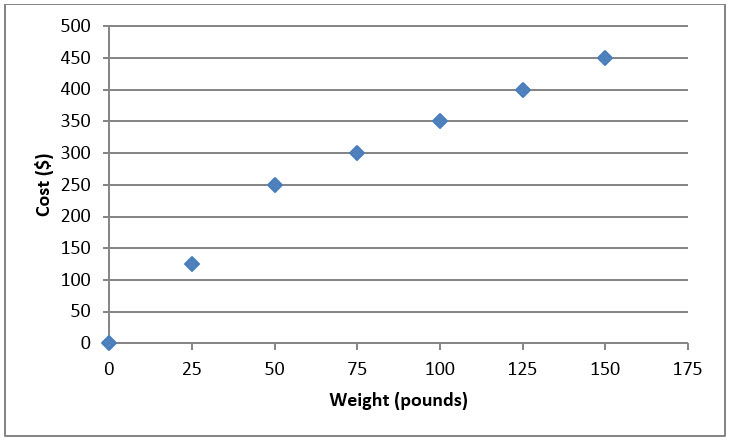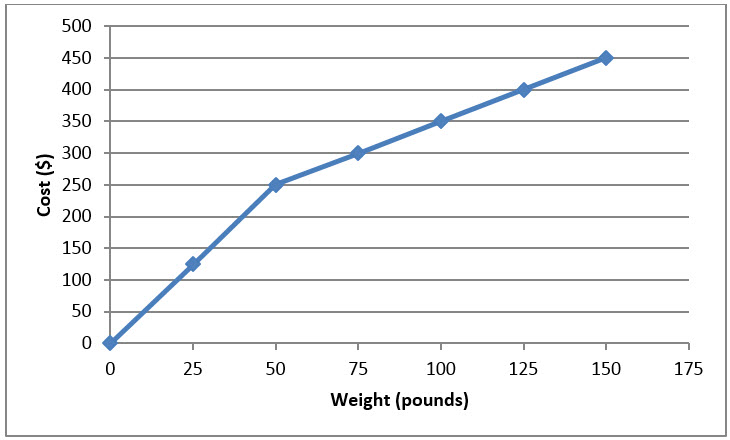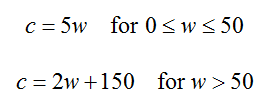Although this may seem a little gruesome, it is not uncommon for businesses to give discounts for volume sales. In this case, a mortician charges less per pound for bodies weighing more than a certain amount.
The local mortician charges by the pound for embalming according to the following table:
Find a piecewise linear function that models the cost as a function of weight.
To get started on this problem, it is best to have some visual representation of the function so we can see why a piecewise linear function is appropriate. To help us make this graph, let’s make up a table of values and find some corresponding costs.
Now let’s make a graph of these data points.
Examining the data and the shape in this graph, you might make an educated guess that the graph of the function might look like:
The graph seems to consist of two pieces. One piece extends from 0 pounds to 50 pounds and the other extends beyond 50 pounds (which makes sense with the description given). Both pieces are straight lines, but each has a different formula. Let’s look at each piece and deduce the formula for that piece.
Weights from 0 to 50 pounds
This piece passes through three points on the graph: (0, 0), (25, 125) and (50, 250). To find the equation of this segment, we’ll use the slope intercept form of a line y = mx + b. In this case, we’ll change the variable names to make it more appropriate. Let’s write
c = mw + b
were c is the cost to embalm a person weighing w pounds.
Since (0, 0) is the y-intercept, we know that the value of b must be 0. We can calculate the slope from any pair of the three points. If I use the second and third ordered pair, I get
To write out the equation, I set m = 5 and b = 0 to get
c = 5w for 0 ≤ w ≤ 50
The inequalities on the end let us know that this formula is only valid for weights from 0 to 50 pounds.
Weights above 50 pounds
The same approach we used above will also work in this section. Let’s pick two points from that piece and use to find the formula c = mw + b. Any pair of points in the second piece will work, but let’s use (75, 300) and (150, 450). Using these points, the slope is calculated to be
This means that we can write our equation as
c = 2w + b
This segment of the function does not cross the y axis, so to find b we’ll need to substitute one of our points into the function. Pick (75, 300) and set w = 75 and c = 300:
300 = 2(75) + b
Simplifying this and solving for b gives us
300 = 150 + b
150 = b
This means that the equation for this segment is
c = 2w + 150 for w > 50
Put It All Together
Let’s look at where we are. We have the formula for each piece:
In a piecewise function, we write these pieces together. Let’s call this function C(w), the cost to embalm a body weighing w pounds.
This formulation takes the two pieces and puts them together into a single function C(w).









